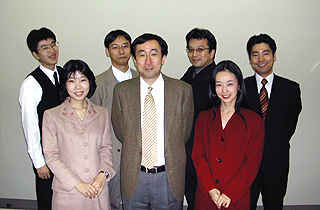Introduction to Camellia
Camellia is a symmetric key block cipher developed jointly in 2000 by world top class encryption researchers at NTT and Mitsubishi Electric Corporation. Technologically speaking, Camellia naturally has not only a high level of security, but also excellent efficiency and practical characteristics. It can be implemented at high performance by software on various platforms. In regard to hardware implementation, compact and low-power consumption type implementation as well as high-speed implementation is possible.
Based on these technological advantages, Camellia has been internationally recognized, for example the selection project on the European recommendation of strong cryptographic primitives, NESSIE, evaluated Camellia to have "many similarities to the AES, so much of the analysis for the AES is also applicable to Camellia." Currently, Camellia is the only cipher internationally recognized which has the same level of security and performance as AES, and is selected for many international standard/recommended ciphers. In particular, as Japanese domestic ciphers, this is the first case to be approved as IETF standard ciphers (Proposed Standard RFC) .
NTT also provides Camellia open source and contributes to open source activities. Now, Camellia is loaded with many international major open source softwares, e.g., OpenSSL, Firefox, Linux, and FreeBSD. In addition, NTT joined in MIT Kerberos consortium to promote Camellia by international collaboration.
NTT and Mitsubishi Electric Corporation grant royalty-free licenses of the essential patents for Camellia in order to establish a leadership role toward achieving a low-cost secure advanced telecommunication society through the proliferation and promotion of Camellia that contribute to the construction of an environment in which various security products and services can be used widely.
Up until now, NTT and Mitsubishi prepare the royalty-free licensing agreement for jointly owned Camellia essential patents mainly for industrial enterprises and corporations that develop products incorporating Camellia. Hereafter, however, in accordance with an agreement between NTT and Mitsubishi, Camellia essential patents can be used at no charge by any Camellia user without concluding such royalty-free licensing agreement hereafter. For details, please see the Intellectual Property Information page.
- Instructional Materials
For instructional materials on Camellia
[English] Camellia2010v7_0_eng.pdf (Version 7.0, 1.18MB)
[Japanese] Camellia2010v7_0.pdf (Version 7.0, 3.76MB)For introduction image on Camellia
[English]Camellia_et2.wmv(17MB)
[Japanese]Camellia_jt2.wmv(17MB)
-- It takes time a little to download. --- Summary of the Processing Performance
For a summary of the processing performance of the software and hardware for Camellia
[English] Camellia_Performance100324.pdf (2010-03-24, 191KB)- Specifications
For the specifications for Camellia
- Source Codes
For the source codes for Camellia
- News release / Related Articles
For the News Release and other related articles for Camellia
-Origin of the name Camellia-
Camellia (Tsubaki in Japanese). Japan is the place of origin and the scientific name is Camellia japonica.
In the language of flowers it means Good fortune and loveliness, gratitude
Camellia has a strong will to live, and there are various kinds of Camellia throughout the world. Although this encryption technology originates from Japan, after leaving Japan we want it to grow in various forms. Eventually, people will be surprised and think "Huh? This technology came from Japan?" With this in mind, we named this technology Camellia. Later on, when we asked various people their impression of the name Camellia, many said that Camellia brings to mind the image of a diamond (Notes: "CAMELLIA Diamond" is a famous jewelry in Japan)…. Is that so. Certainly. But, for the name of a cipher, the image of "hardness" may not be bad.
※Camellia is a registered trademark of NTT, Inc. and Mitsubishi Electric Corporation.
Developers

-
- Kazumaro Aoki
- Tetsuya Ichikawa
- Masayuki Kanda
- Mitsuru Matsui
- Shiho Moriai
- Junko Nakajima
- Toshio Tokita
- (At that time of
development)
NTT, Inc.
NTT Social Informatics Laboratories
(NTT Information Sharing Platform Laboratories:at that time of development)
3-9-11 Midori-cho, Musashino-shi, Tokyo, 180-8585 Japan
Mitsubishi Electric Corporation
Information Technology R&D Center
5-1-1 Ofuna, Kamakura, Kanagawa, 247-8501 Japan

